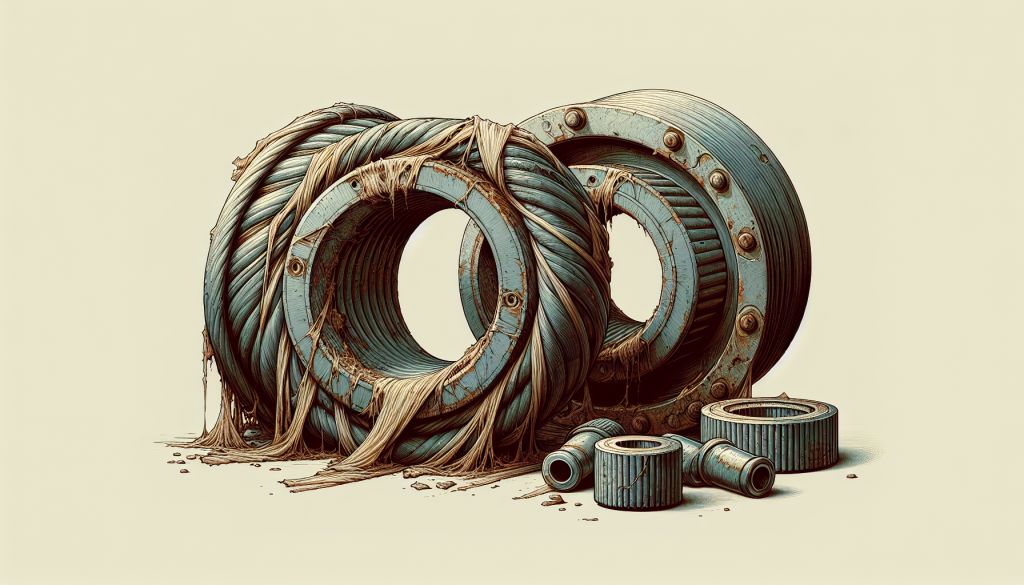Spotting Drivability Problems
When your car’s not driving right, finding the problem is key. Worn bushings can mess with how smooth and stable your ride is. Let’s look at the signs of worn bushings and how they mess with your car’s drivability.
Signs Your Bushings Are Shot
Worn bushings show up in different ways. Catching these early can save you from bigger problems and keep your ride smooth. Here’s what to watch for:
- Excessive Vibration: Car shaking like a leaf at high speeds? Your bushings might be toast.
- Clunking Noise: Hear a clunk when you hit a bump? That’s a red flag for worn bushings.
- Uneven Tire Wear: If your tires look like they’ve been chewed on unevenly, worn bushings could be the culprit.
- Loose Steering: Got a wobbly steering wheel? Your bushings might be giving up.
How Worn Bushings Mess with Your Ride
Worn bushings can really mess up how your car drives. Here’s how they affect your ride:
| Problem | What It Means |
|---|---|
| Increased Vibration | Bad bushings make your car vibrate like crazy, making your ride uncomfortable. More on this at car shaking at high speeds. |
| Poor Handling | Worn bushings make your steering loose, which can be dangerous. Check out steering wheel vibration for more info. |
| Tire Wear | Uneven tire wear from bad bushings can lead to more issues. See worn out tires for details. |
| Noise | Clunking sounds when you hit bumps or turn can mean bushing problems. Look at car shakes when turning for more. |
Knowing these signs and their effects helps keep your car running smoothly and safely. For a full check-up, visit vehicle vibration diagnosis. Fixing worn bushings quickly can get your car back to driving like a dream.
Fixing Worn Out Bushings
Got a bumpy ride? Your bushings might be the culprit. Let’s break down two solid fixes: swapping out old bushings and upgrading to high-performance ones.
Swapping Out Bushings
First up, let’s talk about replacing those tired bushings. Over time, they wear out, causing your car to shake and lose stability. Swapping them out can make a world of difference in how your car handles and feels.
Here’s the deal: replacing bushings means taking out the old, beat-up ones and putting in fresh ones. A pro mechanic can handle this to make sure everything fits just right. Make sure you get bushings that match your car’s specs for the best results.
| Bushing Type | Average Replacement Cost (USD) | Labor Time (Hours) |
|---|---|---|
| Control Arm Bushings | $100 – $300 | 2 – 4 |
| Sway Bar Bushings | $50 – $150 | 1 – 2 |
| Suspension Bushings | $200 – $400 | 3 – 5 |
Need more info on spotting bushing issues? Check out our guide on vehicle vibration diagnosis.
Upgrading to Performance Bushings
If you’re after a smoother, sportier ride, performance bushings are the way to go. These bad boys are tougher and give better handling than regular bushings. Made from stuff like polyurethane, they last longer and keep your car feeling tight on the road.
Switching to performance bushings can make your car more responsive, especially if you love spirited driving or hitting the trails. Just a heads-up: they might make your ride a bit noisier and bumpier than standard bushings.
| Bushing Type | Material | Benefits |
|---|---|---|
| Polyurethane Bushings | Polyurethane | Tougher, Better Handling |
| Rubber Bushings | Rubber | Smoother Ride, Less Noise |
| Delrin Bushings | Delrin (Acetal Resin) | Super Stiff, Precise Handling |
Before you make the switch, chat with a mechanic to pick the right performance bushings for your car. This way, you’ll get the most bang for your buck. For more tips on keeping your car running smooth, check out our articles on car shaking at high speeds and suspension vibration.
By fixing those worn-out bushings, whether you replace them or upgrade, you’ll get back to enjoying a smoother, more stable ride. Got issues like steering wheel vibration or car shakes when braking? These fixes can help you get back on track.



